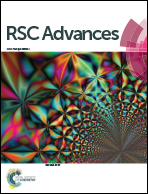Recent progress in Li-rich layered oxides as cathode materials for Li-ion batteries
Abstract
The Li-ion battery represents one of the most important and most technically challenging components of electric vehicles. The cathode is one of the three key components (i.e., cathode, anode, and electrolyte) of the Li-ion battery and determines the battery quality. The demand for higher energy density, lower cost, and environmentally friendly batteries makes Li-rich layered oxides xLi2MnO3·(1 − x)LiMO2 (LR-NMC) among the most attractive candidates for future cathode materials. In this review, we discuss the state-of-the-art research activities related to LR-NMC materials, including their structures, mechanisms of high capacity and large voltage, challenges, and strategies that have been studied to improve their performances. Finally, we conclude with some personal perspectives for the future development of LR-NMC materials.


 Please wait while we load your content...
Please wait while we load your content...